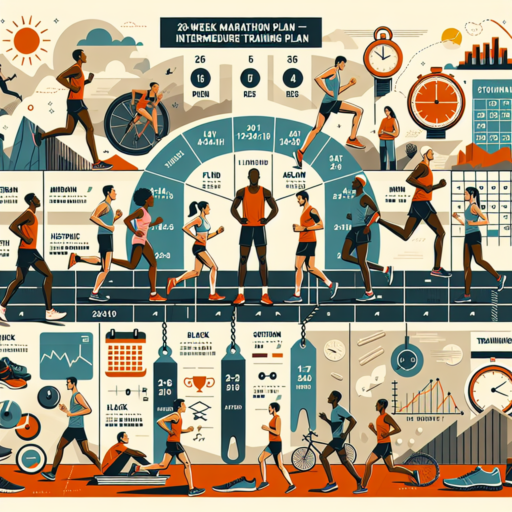Understanding the New York Marathon: A Comprehensive Overview
The New York Marathon stands as a monumental event in the world of long-distance running, drawing participants and spectators from across the globe. This annual race, spanning the vibrant boroughs of New York City, offers a unique blend of athletic rigor, cultural diversity, and communal celebration. Understanding the essence and the scope of this marathon provides insights into why it has become such a revered and anticipated event in the athletic calendar.
At the heart of the New York Marathon is its remarkable course. The race kicks off in Staten Island, with runners embarking on a scenic journey through the five boroughs: from Brooklyn and Queens to Manhattan, culminating in the iconic finish in Central Park. Along this 26.2-mile trek, athletes experience the diverse neighborhoods and landscapes that make New York City extraordinary, cheered on by an enthusiastic crowd that numbers in the millions.
Equally significant is the marathon’s history and impact. Since its inception in 1970, the event has grown exponentially, from a modest beginning with just 127 participants to now hosting over 50,000 runners annually. This evolution mirrors the burgeoning interest in marathon running worldwide but also highlights the New York Marathon’s special allure. It’s not just the physical challenge that attracts participants; it’s the chance to be part of a much larger, global community of runners, volunteers, and supporters, all united by a love for the sport and the city itself.
Creating a Winning Training Plan for the New York Marathon
The New York Marathon stands as a pinnacle in the world of long-distance running, attracting athletes from every corner of the globe. As such, creating a winning training plan is pivotal for success in this prestigious event. Understanding the unique demands of this marathon will guide your preparation, ensuring you’re as ready as can be when you line up at the starting line.
First and foremost, it’s crucial to incorporate a mix of training types into your regimen. This includes long runs to build endurance, speed work to enhance your pace, and hill training to prepare for the varying elevations throughout the course. Each component plays a significant role in developing the strength, speed, and stamina needed to tackle the marathon effectively.
Besides the physical preparation, understanding and planning for the marathon’s environment is key. The New York Marathon typically takes place in November, when the weather can be unpredictable. Adapting your training to simulate possible race day conditions, from chilly mornings to potentially windy stretches, will help you in staying comfortable and maintaining pace throughout the race.
Nutrition and Diet Tips for Marathon Training
Training for a marathon requires more than just long runs and interval training; your nutrition and diet play a crucial role in how effectively you can perform and recover. Understanding the balance of macronutrients and hydration strategies is fundamental to optimizing your marathon preparation. Here’s what you need to know:
Macronutrient Balance
The foundation of a marathoner’s diet should be balanced amongst carbohydrates, proteins, and fats, each serving a specific purpose in both training and recovery. Carbohydrates are your primary energy source, particularly important for long-distance runners. Incorporating a variety of whole grains, fruits, and vegetables ensures a stable release of energy. Protein, on the other hand, is essential for repair and growth of muscle tissue, with lean meats, legumes, and dairy products being excellent sources. Lastly, healthy fats from avocados, nuts, and seeds support overall health and provide a secondary energy source during longer endurance events.
Hydration Strategies
Staying adequately hydrated is as critical as nutrient intake. Marathon training puts a significant demand on your body’s water resources, influencing not just performance but also recovery and overall health. It’s recommended to personalize your hydration strategy based on your sweat rate, weather conditions, and training intensity. Drinking small amounts of water regularly throughout the day, as well as including electrolyte-enhanced fluids, can help maintain balance and prevent dehydration.
Key Workouts for Preparing for the New York Marathon
When it comes to preparing for the prestigious New York Marathon, focusing on key workouts is essential to build endurance, speed, and the mental toughness required to tackle the 26.2 miles. Each workout is designed to bring you closer to your marathon goals, whether you’re aiming to simply cross the finish line or set a personal best. Here’s a look at the in-depth preparations needed to get your body marathon-ready.
Long Distance Runs
Long runs are the cornerstone of marathon training. They help your body adapt to spending extended periods of time on your feet, improving your endurance and teaching your muscles to store more energy. Starting with a distance you’re comfortable with, increase your long run by 10-15 minutes each week. This gradual increase minimizes the risk of injury while maximizing your marathon potential.
Interval Training
Interval training boosts your VO2 max, allowing your body to use oxygen more efficiently during the marathon. Incorporating intervals into your regimen means alternating between high-intensity runs and periods of recovery. For example, after a warm-up, you might run 1 kilometer at race pace, followed by 3 minutes of easy jogging. These sessions should be challenging but manageable, ensuring you’re building speed without overtraining.
Tempo Runs
Finally, tempo runs are critical for understanding how to manage your marathon pace. Unlike intervals that focus on speed, tempo runs are about maintaining a «comfortably hard» pace for a more extended period. This type of workout teaches your body to run more efficiently at your marathon pace, which is invaluable for race day. Starting with 20 minutes at tempo pace and gradually increasing the duration can significantly enhance your pacing strategy for the New York Marathon.
Importance of Running Gear and Choosing the Right Equipment
Understanding the importance of running gear and choosing the right equipment is essential for every runner, whether you’re embarking on your first 5K or gearing up for a marathon. Top-notch running gear doesn’t just make the experience more comfortable; it can significantly reduce the risk of injury and improve your performance. The difference between a regular pair of sneakers and ones designed specifically for running can be monumental in terms of support, comfort, and injury prevention.
When selecting the right running equipment, considering the material, fit, and designed purpose of each piece is crucial. For instance, running shoes with proper arch support and cushioning make a world of difference in absorbing shock and reducing stress on your joints. Similarly, moisture-wicking fabrics in clothing can greatly enhance your comfort by keeping you dry, thus preventing chafing and other skin irritations that can occur during longer runs.
Moreover, the advancement in sports science and technology has led to the development of innovative running gear tailored to different types of runners. From GPS watches that monitor your pace and distance to compression wear that enhances blood circulation and recovery, the right equipment can be a game-changer. Understanding the specific benefits of these technologies and how they align with your running goals is part of the journey to becoming a more efficient and motivated runner.
How to Adapt Your Training Schedule to Your Life
Adjusting your training schedule to fit into your bustling life might seem like a daunting task at first glance. However, integrating fitness into your daily routine doesn’t have to be an uphill battle. The key is to consider your unique lifestyle and commitments, then tailor your workout regimen accordingly. It requires a strategic approach and a bit of creativity to make your health a priority without sacrificing other important aspects of your life.
Understand Your Rhythms: Everyone has their own rhythms and cycles—some are morning people, while others find their energy peaks in the evening. Start by identifying the times you feel most energetic and consider slotting your workout sessions during these periods. This ensures you’re working with your body’s natural inclinations, making it easier to stick to your training schedule. Also, consider the nature of your work or studies. If you have a flexible schedule, use it to your advantage by integrating shorter, more frequent workouts that can be easily adjusted as your day unfolds.
Prioritize and Plan: Once you’ve identified the best times for your workouts, make them a non-negotiable part of your day. Planning is crucial here. Use a calendar or digital planner to block out time for your training, treating these blocks as you would any important appointment. This method emphasizes the importance of your workout routine and reduces the likelihood of it being overlooked or bumped for other activities. Remember, consistency is key in seeing results and adapting your training schedule successfully into your life.
Injury Prevention Strategies for Marathon Runners
Marathon running is an exhilarating yet physically demanding sport that requires comprehensive preparation, not just in terms of stamina and endurance but also in ensuring safety to avoid injuries. Implementing effective injury prevention strategies is crucial for marathon runners to maintain their health and performance. Understanding and incorporating these strategies can significantly reduce the risk of common running injuries, such as shin splints, stress fractures, and IT band syndrome, among others.
Develop a Structured Training Plan
One of the foundational aspects of injury prevention is following a well-structured training plan. It should meticulously balance intensity, volume, and recovery periods to avoid overtraining and give the body ample time to heal and strengthen. Incorporating periodic rest days is essential to allow for muscle recovery and repair. Moreover, including cross-training activities, such as swimming or cycling, can help build endurance and muscle strength without overburdening the joints typically stressed by running.
Focus on Proper Running Form and Technique
Another key element in preventing injuries is focusing on proper running form and technique. Maintaining a balanced and efficient running posture reduces the strain on muscles and joints, effectively lowering the risk of injury. This includes running with a slight forward lean, keeping the head stacked over the shoulders, and avoiding overstriding. Additionally, runners should pay close attention to their foot strike and use footwear that supports their natural gait cycle. Engaging in regular strength training exercises aimed at the core, hips, and legs can also enhance form and reduce the likelihood of developing overuse injuries.
Mental Preparation: Getting Psyched for the Big Race
Preparing for a big race goes beyond just the physical aspects; mental preparation plays a crucial role in achieving peak performance. Understanding how to get psyched up for the event can mean the difference between a good and a great performance. It’s about harnessing the power of your mind to fuel your body.
Setting realistic yet challenging goals is a fundamental part of your mental preparation. It’s essential to have clear, achievable objectives that push your limits without setting you up for disappointment. Visualizing your success, imagining yourself crossing the finish line, and experiencing the joy of achieving your goal can significantly impact your mental state and boost your confidence.
Focusing Techniques
- Practice mindfulness and meditation to enhance focus.
- Use visualization techniques to mentally rehearse the race.
- Develop pre-race rituals that help calm nerves and set a positive mindset.
Remember, stress management is also a part of mental preparation. Learn to recognize signs of stress and develop strategies to manage it, such as deep breathing exercises or focusing on positive affirmations. Embracing a positive mindset and preparing mentally can empower you to face the race with confidence and resilience.
Recovery Techniques to Keep You on Track
When it comes to maintaining peak physical and mental performance, recovery techniques play a crucial role in helping individuals stay on track. It’s not just about pushing through limits; it’s equally about how you rest, heal, and prepare your body and mind for the next challenge. Amongst the myriad options for recovery, certain strategies stand out for their effectiveness and ease of implementation.
Effective Sleep Hygiene
Prioritizing sleep hygiene is paramount for optimal recovery. This involves establishing a consistent sleep schedule, creating a restful environment, and avoiding stimulants before bedtime. Quality sleep not only aids in muscle repair but also supports cognitive function, making it a top-tier method for ensuring you’re ready for what lies ahead.
Nutritional Interventions
Another pillar of robust recovery practices includes nutritional interventions. Consuming a balanced diet rich in antioxidants, proteins, and healthy fats helps to fuel the repair process. Strategic hydration, focusing on replenishing electrolytes lost during physical activity, is equally important. Together, these nutritional efforts can significantly reduce downtime and enhance overall performance.
Active Recovery and Mindfulness
Lastly, incorporating active recovery methods like light exercise, stretching, or yoga can benefit the body and mind alike. Complementing these with mindfulness techniques such as meditation or deep-breathing exercises further aids in reducing stress levels and improving mental resilience. These combined efforts ensure a comprehensive recovery, enabling individuals to remain at their best.
No se han encontrado productos.
Tips for First-Timers Running the New York Marathon
Participating in the New York Marathon for the first time can be as daunting as it is exhilarating. This iconic event draws thousands from around the globe, each runner with their eyes set on the finish line. To ensure your experience is memorable for all the right reasons, it’s essential to approach the race with preparation and know-how.
Build a Tailored Training Plan
One of the pivotal steps for marathon prep is developing a custom training plan. Starting months in advance, your plan should gradually increase in intensity, allowing your body to adapt without the risk of injury. Incorporate long runs, speed work, and rest days to balance your training. Every runner’s body is unique, so listen to yours and adjust your training as needed.
Nutrition and Hydration Strategies
Fueling your body correctly is just as important as the physical training. In the weeks leading up to the marathon, focus on a diet rich in carbohydrates, proteins, and healthy fats to build energy reserves. Hydration is another critical aspect; practice your water and electrolyte intake during long training runs to find what works best for you on race day.
On-the-Day Logistics
The New York Marathon’s early start and vast scale require careful logistical planning. Research and plan your transportation to the starting line well in advance to avoid any race-day stresses. Consider the race’s official transportation options for convenience. Lastly, familiarize yourself with the course beforehand to mentally prepare for the elevation changes and crowd support spots. A well-planned approach ensures that all you need to focus on is putting one foot in front of the other.




